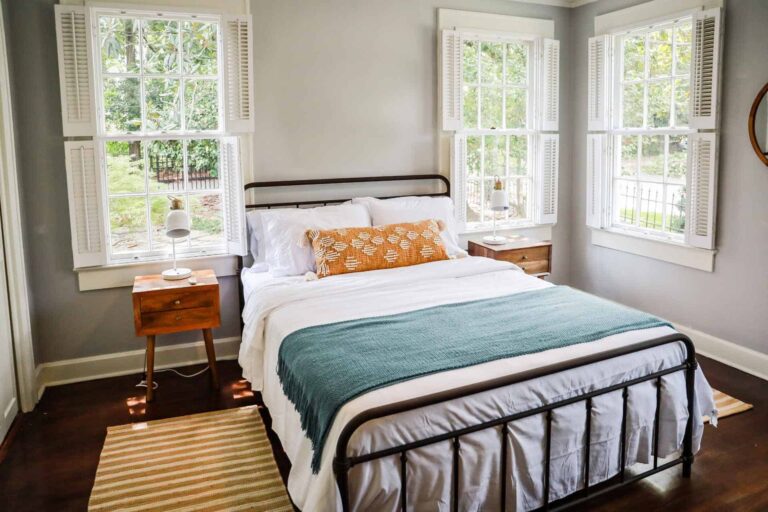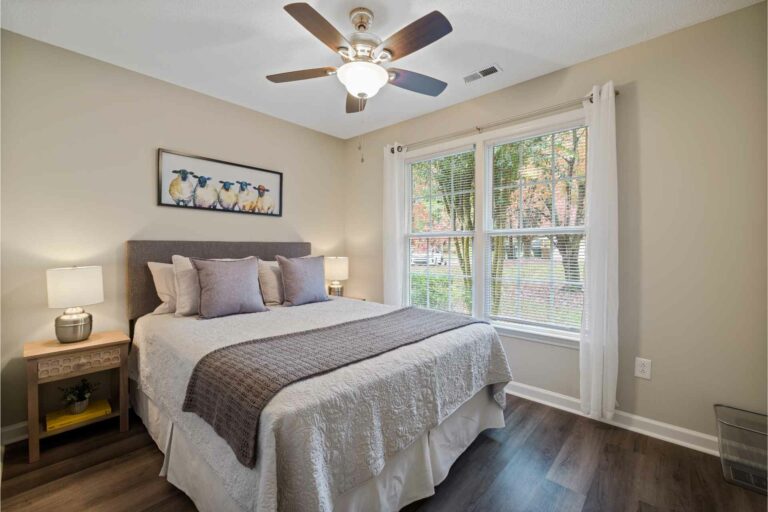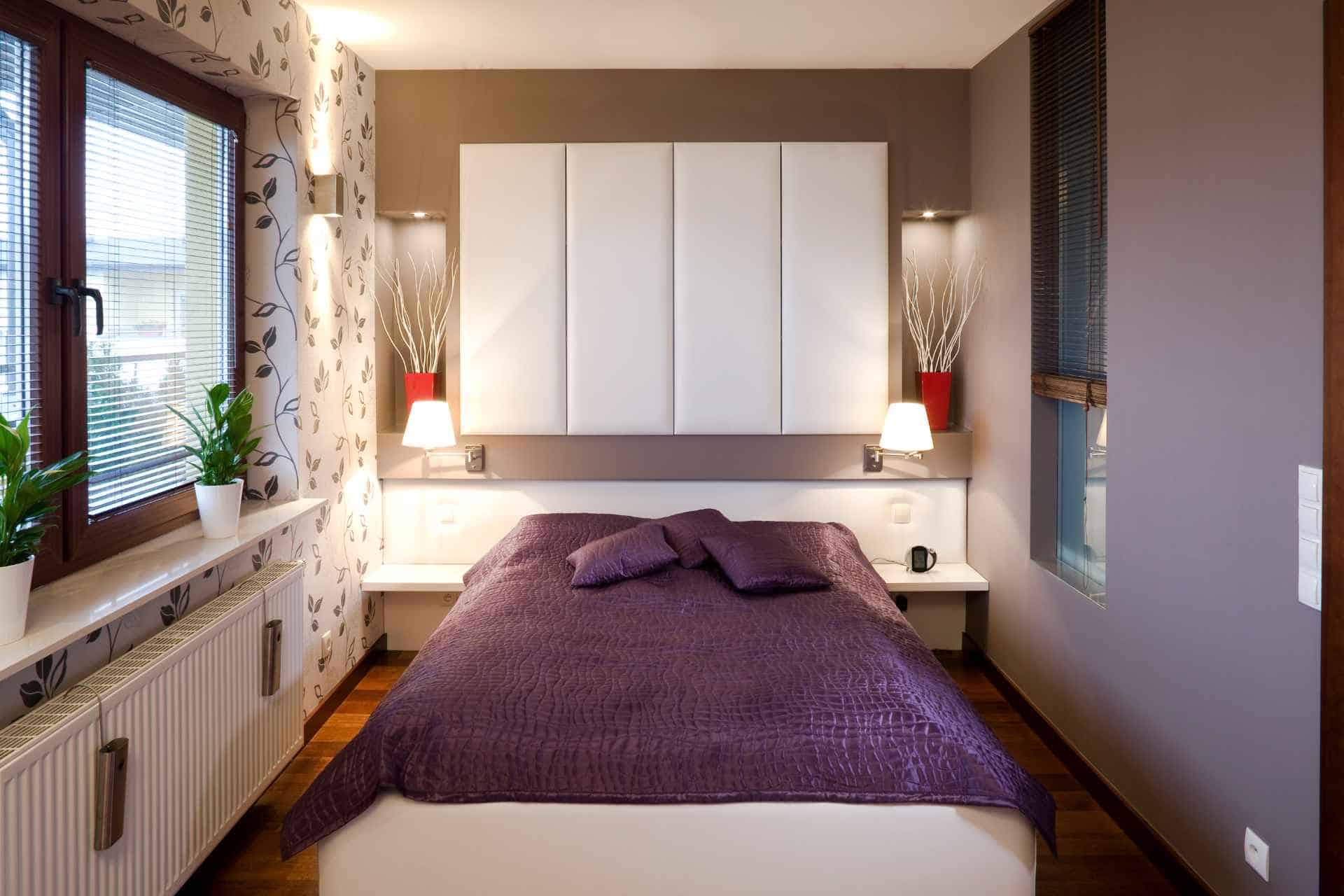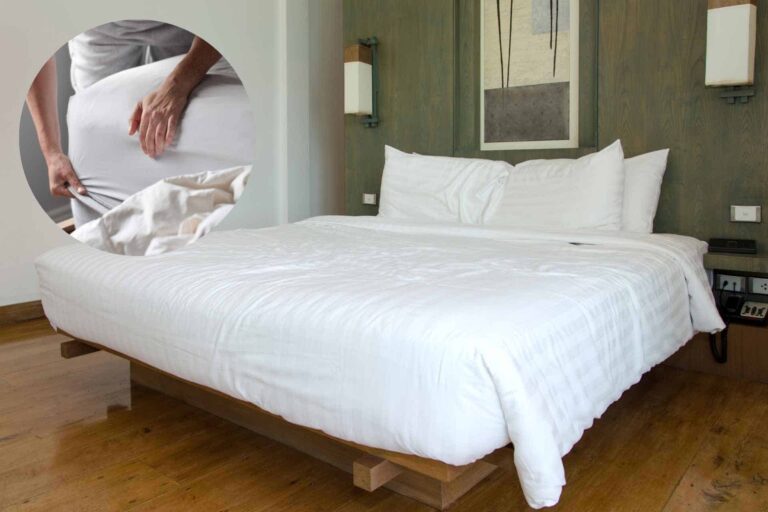Small Bedroom Feng Shui Bedroom Layout: Tips for Harmonious Design
Feng Shui, originating from ancient China, is a practice that aims to establish harmony between humans and their environment. It is based on the principle that the arrangement and orientation of things within a space can affect the flow of energy, or ‘Chi’. It’s significantly influential in designing living spaces, such as the ‘small bedroom Feng Shui bedroom layout’. This concept is about arranging elements within a small bedroom to create a serene, comforting, and energy-flowing atmosphere. It touches upon everything from the placement of the bed and furniture to the colors on the walls and the type of lighting used. The goal is not just to create a visually pleasing space, but also to ensure that the room’s energy is balanced and promotes positivity, rest, and rejuvenation.
The Significance of Small Bedroom Feng Shui Bedroom Layout Design
Feng Shui assumes a vital role in bedroom layout design. As the bedroom is our personal sanctuary, the energy within this space significantly impacts our mood, sleep quality, and overall well-being. When designed in alignment with Feng Shui principles, the bedroom can transform into a calming haven of tranquillity and positive energy. It encourages ,restful sleep, which is crucial for rejuvenation and maintaining good health. Moreover, a well-balanced Feng Shui bedroom layout can enhance relationships, attract love and promote a sense of harmony. This ancient practice not only serves an aesthetic purpose but also aims to improve the quality of life by promoting positive energy flow. Hence, applying Feng Shui in bedroom layout design is of immense importance.
Understanding the Energy Map: The Bagua
The Bagua, often referred to as the ‘Feng Shui energy map’, is a fundamental tool in the practice of Feng Shui. Originating from the I Ching, the ancient Chinese book of wisdom, the Bagua is a grid divided into nine sectors. Each of these sectors corresponds to a distinct area of life- wealth, fame and reputation, love and marriage, family, health, creativity and children, knowledge and wisdom, career, and helpful people and travel. It also connects to a specific element, color, and season, thereby guiding the optimal organization and color scheme of your space. To apply the Bagua, it is superimposed onto a floor plan, and each area of the home is enhanced based on its corresponding life aspect. Understanding and incorporating the Bagua in bedroom layout design can thus significantly improve the bedroom’s energy flow, impacting the various aspects of one’s life positively.
Applying the Bagua in a Small Bedroom

Applying the Bagua in a small bedroom can be a challenge, but it’s certainly doable with careful planning. Start by sketching a floor plan of your bedroom on a piece of paper, ensuring all dimensions are accurate. This serves as your bedroom’s energy map. Next, superimpose the Bagua grid onto your floor plan.
In a small bedroom, every piece of furniture and decor item counts. Aim to place your bed in the ‘Health’ or ‘Relationships’ area of the Bagua, as these sectors are linked to rest and intimacy. Avoid placing the bed against the same wall as the door to ensure a steady flow of positive energy.
Use color strategically. For instance, in the ‘Wealth’ area, try to incorporate purples, reds, and blues, and in the ‘Career’ area, use shades of black and blue. However, moderation is key as an overload of these colors can disrupt the harmony.
Minimal clutter is essential in a small bedroom. Keep the space tidy and open to allow chi to flow smoothly. Every object in your bedroom should serve a purpose or bring you joy. Remove any items that no longer serve you or do not match the energy you want to create in your bedroom.
The Ideal Placement of the Bed
In Feng Shui, the placement of the bed is considered one of the most critical factors in energizing the bedroom. Known as the ‘commanding position’, the ideal bed placement allows you to have a clear view of the door while not being directly in line with it. This position symbolizes protection, providing a sense of security and control over your life. Moreover, it is also preferred that the bed is backed by a solid wall, representing support in life and relationships. The absence of a solid structure behind the bed may lead to feelings of instability and unrest. Keep in mind that the bed should not be placed under a window, as it can lead to disturbed sleep due to the energy entering and leaving through the window.
Bed Placement Tips for Small Bedrooms

Placing a bed in a small bedroom requires clever strategizing to ensure optimal energy flow while maximizing the limited space. Start by placing the bed in the ‘commanding position,’ if possible, even in a small room. However, due to space constraints, this might not always be achievable. In such cases, use a mirror to reflect the door, creating a sense of openness and enabling you to see the entrance from the bed.
Try to align the bed along the longest wall, which often provides the most comfortable spacing. Leaving a bit of room on either side of the bed will promote better chi flow and make the room feel less cramped.
Avoid placing the bed directly in front of the door or under a window, even in a small room. These positions can disrupt the energy flow and negatively affect your rest.
Lastly, consider using a bed with built-in storage or one that’s elevated to allow for storage underneath. This can help reduce clutter by providing additional storage space, further enhancing the positive flow of energy in your bedroom.
De-Cluttering and Organizing
Maintaining a clutter-free space is of paramount importance when it comes to regulating the energy flow in your bedroom. Clutter essentially represents stagnation and can significantly disrupt the flow of positive chi. Clutter not only leads to a feeling of chaos and disorganization, but it can also cause stress and a lack of focus. By removing unnecessary items and maintaining an organized and tidy space, you create a conducive environment for relaxation and tranquility. This clean space promotes restful sleep, improved concentration, and an overall sense of well-being. Remember, every item in your bedroom should serve a purpose and bring joy – if it doesn’t, it’s likely contributing to clutter and should be removed or repurposed.
Organizing Tips for Harmony
Creating a harmonious bedroom environment involves thoughtful organization and placement of furniture and accessories. Start by grouping similar items together, like books, trinkets, or clothing, to create order and reduce confusion. Having specific places for your belongings, where they are easily accessible yet out of sight, can greatly increase the tranquility of your space.
Use organizing tools such as baskets, drawer dividers, and under-bed storage to help keep your items neatly stowed away. These solutions not only help maintain tidiness but also contribute to the aesthetic appeal of the room.
Keep your room decor simple and soothing. A harmonious bedroom environment thrives on minimalism. Choose a limited color palette and avoid excessive patterns or loud colors.
Lastly, incorporate natural elements into your decor, like indoor plants or items made from wood, to create a serene and grounded atmosphere. These elements can help put your mind at ease and promote better sleep.
Choosing the Right Colours

Feng Shui color theory emphasizes the balance and harmony of colors to cultivate specific energies within your living space. Each color corresponds to one of the five Feng Shui elements – Wood, Fire, Earth, Metal, and Water.
Green, representing the Wood element, fosters growth, vitality, and abundance. It’s ideal for spaces where you want to inspire development and creativity.
Red, symbolizing the Fire element, brings about passion, high energy, and stimulation. It’s great for rooms where lively activities take place but should be used sparingly in a bedroom to avoid restlessness.
Earth tones such as beige, sandy colors, and soft yellows, associated with the Earth element, create a stable, grounded feeling and promote calmness and tranquility.
White and metallic colors like gold and silver, representing the Metal element, encourage preciseness, clarity, and efficiency.
Lastly, blue and black, symbolizing the Water element, foster a sense of calm, wisdom, and introspection.
For a small bedroom, it’s recommended to opt for light and pastel shades as they give the illusion of space and help to maximize natural light. Whites and creams serve as an excellent base, embodying the Metal element and promoting clarity. Adding accents of blue and green, representing the Wood and Water elements, can foster a tranquil and relaxing atmosphere. Pastel yellows, embodying the Earth element, can also be incorporated to add a hint of warmth and comfort. Remember, a balanced mix of colors will create a harmonious environment, making your small bedroom appear more spacious and inviting.
Lighting and Artwork

Lighting plays a crucial role in Feng Shui as it is considered a form of energy and a way to stimulate Chi, the universal life force. Adequate and well-balanced lighting can enhance the flow of positive energy, promote tranquility, and create a warm and inviting ambiance. It is recommended to have layers of lighting — ambient, task, and accent lighting to balance the yin and yang energies within the space. Natural light is considered the best form of light in Feng Shui, so during the day, allow as much sunlight as possible to enter the room. In addition, using specific colors with lighting can further accentuate the Feng Shui elements. For example, warm white lights may be used to strengthen the Earth element, while cool white lights can enhance the Metal element. As always, the key is to maintain a balance and ensure that the lighting complements the overall design and color scheme of the room.
Choosing artwork for a small bedroom
Artwork is not just an aesthetic choice, but also a powerful tool to influence the energy in your small bedroom. While choosing artwork in Feng Shui, it is recommended to opt for pieces that evoke positive emotions and align with the Feng Shui principles of harmony and balance. It’s best to select pieces that depict nature, landscapes, or uplifting themes to promote peace, inspiration, and positive Chi. However, avoid pictures that are too vibrant or chaotic, as they could disturb the tranquility of the space. The size of the artwork should be proportionate to the size of the room and not overwhelm the space. It’s also vital to position the artwork correctly. The best place for artwork is opposite the bed, allowing you to take in the energy it emits as soon as you wake up. However, it’s essential to avoid placing artwork above the headboard as this can create a sense of pressure. Remember, the goal is to contribute to the serene and harmonious atmosphere of your small bedroom.
Conclusion
Feng Shui offers invaluable guidance for optimizing your small bedroom space, ensuring it emanates positive energy and tranquility. Key principles include allowing ample sunlight during the day and using color-specific lighting to accentuate Feng Shui elements. When selecting artwork, aim for pieces that inspire positivity and harmony, preferably depicting nature or uplifting themes. Proportionality is important, and the artwork should neither be too large for the room nor placed above the headboard. Instead, position it opposite the bed for a positive start to your day. Remember, Feng Shui’s ultimate goal is to create a balanced and serene atmosphere in your living space.
As we’ve explored, Feng Shui has the potential to greatly enhance the energy and comfort of even the smallest of bedrooms. But as with all design principles, it comes alive when you put it into action. Don’t be afraid to experiment with these guidelines and see how they transform your space. Remember, the objective is to create a room that serves as your sanctuary, filled with positive energy and tranquility. It may take a little time and effort, but the outcome – a harmonious, balanced room that radiates positivity – is definitely worth it. Start incorporating these Feng Shui principles into your bedroom design today, and experience the remarkable difference it can make!








